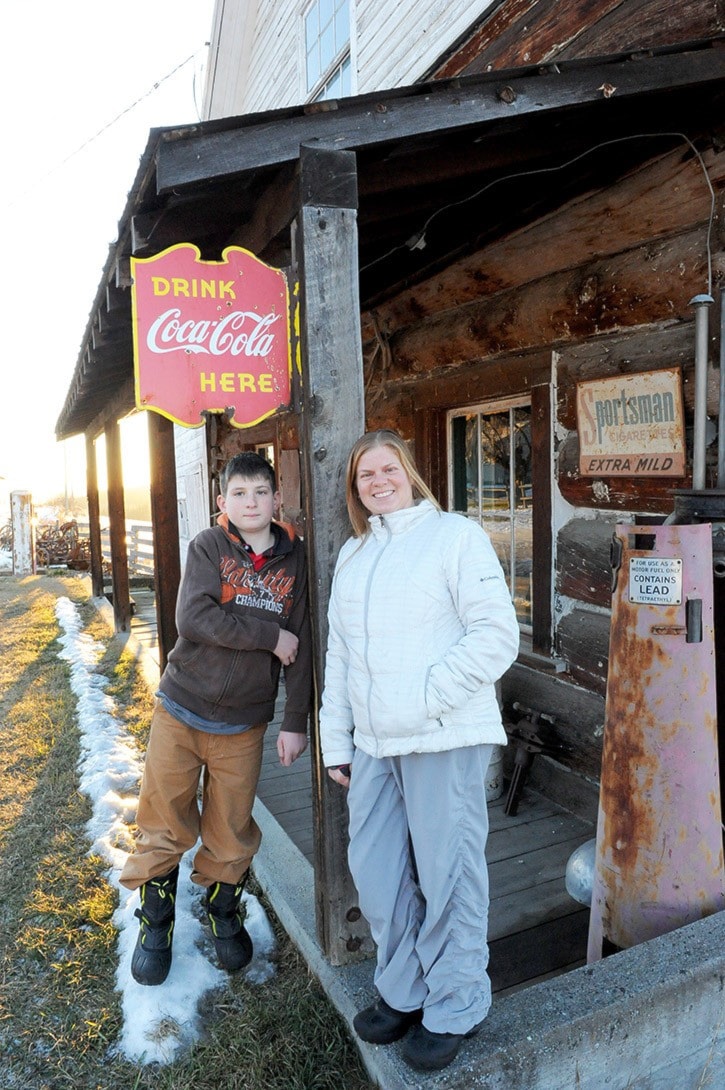A century-old B.C. time capsule like no other is on the brink of being opened for all the world to see.
In the early 1900s, Italian settler Louis Crosina built a stopping house and store just outside of Williams Lake to serve pioneers trekking the Cariboo Wagon Road, a gold-seekers’ route that stretched all the way from Yale to Barkerville.
But in 1914, when business outgrew the store, Crosina and his family decided to expand with a second two-storey, tin-roofed log building known now as the 153 Mile Store.
Joe and Peggy Patenaude bought that store — along with the rest of the 153 Mile Ranch — in 1958 and the store still sits there today, packed with decades-old sundries and supplies seldom touched or seen.
Their son Roger said that after Crosina’s daughter Lil died behind the store’s counter in 1963, the Patenaudes closed shop, but in the 1970s, Peggy began to go though the store and realized the value of sharing its contents with the public.
She soon reopened the store, but as a private museum. To this day, folks can still visit the store provided they give the Patenaudes a heads-up.
However, because the store sits on the Patenaude’s working ranch — private property where the cattle need tending — that can get tricky.
So, the family’s now looking to open its doors permanently by donating the store to the City of Williams Lake, which hopes to truck the store, contents and all, into town.
“When my mother passed, her wishes were to have the store preserved in the name of the Crosina and Patenaude families, and right now we’re finding it very difficult to keep the store preserved where it is,” Roger Patenaude said.
“It’s actually quite a museum.”
He said the store and its contents remain in great shape. His family hasn’t kept the building heated but it’s stayed dry inside. The cement foundation is strong and the artifacts are in impressive condition.
The store’s shelves and counters are packed with goods dating all the way back to when it opened, some brought down from its attic, including stagecoach footwarmers, pottery, hats, books and First Nations leatherwork.
The cash register and calculator are in good shape, as are the store’s ledgers, which were microfiched by the Royal B.C. Museum in Victoria.
Asked why his family doesn’t just hock the wares on eBay, Patenaude protested: “Oh no, no, we would never do that. My mother would haunt me to my grave. To me ... the public needs to be part of this.”
So far, everyone seems set on relocating the store to a space right beside the Museum of the Cariboo Chilcotin in Williams Lake.
The museum, operated by the Williams Lake Museum and Historical Society, is too full to host 153 Mile Store’s artifacts but the adjacent space would be a prime spot for the whole building, according to Mayor Walter Cobb.
At the suggestion of a home mover, Cobb started meeting with log home builders in town to see if it might be more cost-effective to take the building apart and then “put it all back together like a jigsaw puzzle,” rather than trucking the century-old building across town in one piece.
“I think one of the main things is to keep the integrity of the store itself as a museum, so we want to make sure that if and when we move that we’re not going to be doing any damage,” he said.
Such a “time capsule” of B.C. history is a rare and precious find, said William Adams, executive director and curator at the Museum of the Cariboo Chilcotin.
“This building — it’s in its original, in situ state with all the artifacts in place, so it has an authenticity that you won’t find anywhere else,” Adams said.
“It’s almost like it’s set in time since the time it closed.”

But before it’s moved, museum staff will have to document the exact location of every single artifact so they can be put back into their proper place.
That way, when folks pay the store a visit, “the experience is they’re going exactly back into time to when the building was an active store,” Adams said.
The city filed a request for proposals in November for someone to handle the initial stages of the project, including assessing the store’s historic value if it were moved.
The winning contractor will have to sample part of the store’s inventory to identify grant opportunities and to document its historic contents.
They’ll need to assess its structural integrity and provide cost estimates for its relocation, annual operation, a new foundation, rewiring and funding programs.
Leah Hartley, the city’s director of development services, called the project a “wonderful opportunity for the city,” a chance to bring in some expertise so staff have an idea of what it’ll take to move the building and keep it in Williams Lake, where locals and visitors can get an intimate glimpse of life in B.C. since a century ago.
